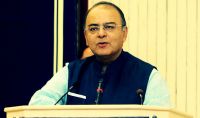
This year’s budget is to be evaluated in the context of the revenue loss to the centre and the gain to the states. Here, the FM has managed to keep fiscal deficit under 4 percent is credible. One of the pre-announcement of the budget- the economic survey has made it clear that the budget will not launch big reforms. They are needless; just what you have to do is continuing with the present ones. Still some of the following reform measures are notable.
- The proposed monetary policy agreement between the RBI and the government on inflation control. Here, the hint is that the government will support the proposed inflation targeting monetary policy framework. But the terms and conditions of the agreement will be interesting. For inflation targeting to be successful, government should contain fiscal deficit each year. Hence such an agreement may change the present relationship between the RBI and the government. Besides, there will be more autonomy to the RBI though it is not full autonomy in setting monetary policy goals.
- The reduction in corporate income tax rate to 25%in five years is a game changer. It should be noted that it for a long time in the reform period, the corporate income tax was remaining at 30%. The step has also lead to fall in direct tax collection of the government.
- The removal in the treatment between FDI and FPI. This step was an unexpected one given that it was just few months back the SEBI and the RBI has incorporated rules to recognize that anything above 10% is FDI and that below it is FPI. Now the FEMA and foreign investment norms have to be changed to adjust with the new decision.
- The merger of FMC with SEBI. Now SEBI becomes the superpower to regulate forward market- be it commodity or financial.
- Many small but plan schemes and programmes are disappeared in the first look. This may be because of two facts. First, now the resources have gone much with the states. They can design their own programmes to suit them. In this respect, the present budget is a trend setter. Secondly, the planning commission has been replaced and thus a programme designing activity has been discontinued. At the same time many programmes of the past is continuing in the same form or with changed version.
- Revival of public investment in infrastructure. The budget makes effort to put government’s own money (Additional Rs 1.25 lakh crore as per the speech). The budget badly needs such a thrust in the wake of the well recognized failure of the various PPP models.
- Financial sector reforms: establishment of Mudra bank will help the MFI sector and the startup initiatives. The allocated fund of Rs 20000 crore is a very serious amount given the fund constraints in this budget. Similarly, the similar treatment of NBFCs and banks from SARFAESI angle will make NBFCs stronger at their won stress to achieve it.
- The Rupay card scheme to facilitate cashless transaction can be seen as small, but is an effective measure suite to modern economy.











